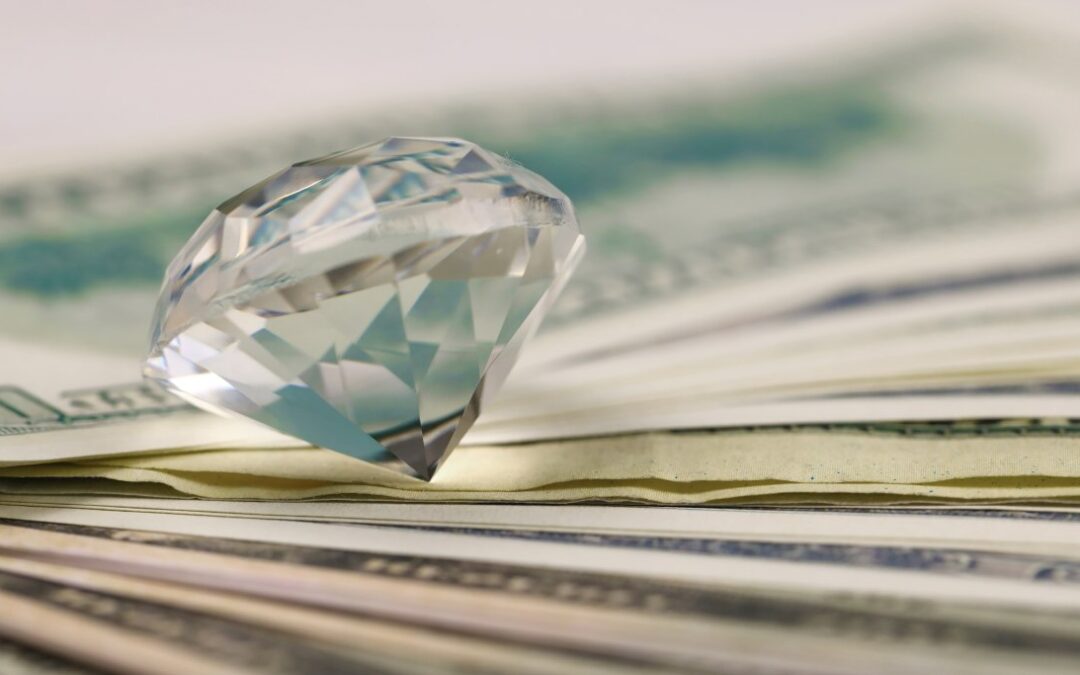Article Contents
Natural Diamond Jewellery Options
Diamonds may be a girl’s best friend, but natural diamonds are the ultimate accessory for those who crave true freedom. With their timeless beauty and exquisite sparkle, these gems have dazzled us since time immemorial – an enduring symbol of style, elegance and unbridled joy. Step into this glittering world with me as I explore the many natural diamond jewellery options available to you today, a shining beacon of hope in uncertain times.
Unsurprisingly, so many people turn to natural diamonds when seeking luxury; after all, they make for a truly captivating adornment. From sparkling pendants and bracelets to classic earrings and cocktail rings, there is something out there for everyone who craves an extra touch of glamour in their livesUnsurprisingly, find these beautiful pieces at prices that won’t break the bank!
But why settle for off-the-shelf items when you can craft your own unique look? Designers around the world offer customised solutions tailored specifically to individuals’ tastes, from one-of-a-kind engagement rings to statement a natural diamond necklace fit for royalty. Let your inner designer shine through and create something extraordinary – it will be worth every penny!
Definition Of Natural Diamonds
Natural diamonds are a timeless symbol of love and luxury. An exquisite natural diamond is one that has been created over millions of years, deep within the Earth’s crust, before being unearthed and polished to reveal its breathtaking beauty. This process gives each diamond its unique characteristics, making it distinct from other stones or man-made imitations.
The origin of a natural diamond can be used to classify it in several ways, including carat size, colour, cut and clarity. Carats refer to the weight of the stone, while colours range from white through yellow and brown hues, with rarer examples such as pink or blue diamonds also available. The cut of a diamond dictates how much light enters into the gemstone, leading to brilliant sparkle when viewed from different angles. Clarity refers to any internal features found in the diamond itself, although many stones have very few visible features due to their age and formation processes.
Whilst there may be some uniformity amongst natural diamonds, no two gems will ever truly look the same – making them all completely individual pieces for those who seek something special in jewellery form. In further exploring types of natural diamonds, we can begin uncovering what makes each example so utterly unique…
Types Of Natural Diamonds
Having established what natural diamonds are and how they differ from synthetic ones, it is important to consider the various types of natural diamonds available. These range from salt and pepper diamonds with inclusions visible to the naked eye to fancy diamonds cut into more unusual shapes.
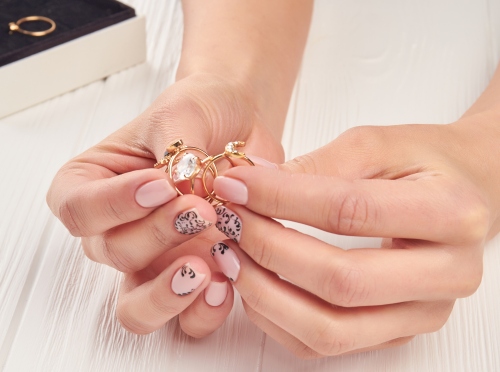
The most common type of natural diamond is a round brilliant cut, although other popular styles include princess cuts, cushion cuts and rose-cut diamonds. Salt and pepper diamonds possess unique characteristics due to their inclusion patterns, whereas fancy diamonds often exhibit vibrant colours such as blue or yellow. These colours can be enhanced by cutting them into different shapes, such as oval or pear-shaped.
No matter what style of natural diamond you opt for, there will always be something special about owning one, knowing that you are wearing an item of jewellery with its own story behind it. The beauty and value of each piece vary greatly depending on factors such as size, clarity, colour and carat weight – making every natural diamond perfectly unique. With this in mind, selecting the right option should not be taken lightly when investing in a valuable piece of jewellery like this.
Undeniably captivating, natural diamond jewellery offers wearers timeless elegance while providing freedom through self-expression – no two pieces ever being exactly alike.
Origin Of Natural Diamonds
Natural diamonds have been around for millennia, and the origin of these beautiful gems has captivated humanity since their discovery. They form a unique presence, from deep within the Earth’s core to the surface, unlike any other earthly element. Where do natural diamonds come from?
The answer lies in their formation inside certain types of rocks known as kimberlites and lamproites. These are volcanic pipes that originate deep beneath the Earth’s mantle and contain high concentrations of carbon-rich minerals like olivine and garnet. The heat and pressure at such depths cause diamond crystals to form out of graphite, becoming one of the most sought-after gemstones we now know today.
Mining for natural diamonds is an incredibly arduous task due to their scarcity – only a few hundred carats can be extracted from each pipe on average – but it remains highly lucrative nonetheless. Diamond miners rely heavily on sophisticated technology ranging from ground penetrating radar which can pinpoint potential sites, to underground exploration techniques used to identify viable deposits:
- Ground Penetrating Radar (GPR): A tool that uses electromagnetic waves to detect anomalies in subsurface geological structures.
- Reflection Seismic Surveying: Uses sound energy sent into the earth by explosives or vibrators to create images of rock formations below the surface.
- Gravity Measurement: Measures subtle changes in gravity caused by differences in density between different rock layers underneath the earth’s surface.
Diamond mining involves digging up large amounts of soil over vast areas with powerful machinery before processing them through numerous stages until individual stones emerge ready for sorting and evaluation. As you can see, there is much more than meets the eye when it comes to finding these precious gems – so assessing quality and value requires careful consideration indeed!
Assessing Quality And Value
When investing in natural diamond jewellery, quality and value should be of utmost importance. Ensuring that the piece is authentic and graded correctly will help buyers invest confidently. To guarantee authenticity when purchasing natural diamond jewellery, customers should look for certificates from an independent laboratory like GIA or IGI, which offer a detailed assessment of each stone’s characteristics, including carat weight, colour grade and clarity rating. Furthermore, pricing guides such as Rapaport can provide valuable insight into current market prices for diamonds of different qualities to ensure customers are not overpaying.
Having confidence in one’s purchase requires well-informed decisions about the quality assurance process used by the retailer. Reputable retailers should have strict protocols ensuring each item meets exacting standards before being offered for sale, with all necessary documentation available on request. Moreover, experienced customer service teams can answer any questions regarding product details so that shoppers feel reassured they know what they’re buying.
Diamonds come in many shapes and sizes – making it important to understand how these factors play into assessing quality and value. It goes without saying that larger stones tend to be more expensive than smaller ones; however, other considerations, such as gemstone shape and cutting style, may affect the price too. For instance, fancy-shaped diamonds often cost more than round-cut stones due to increased manufacturing complexity while still maintaining brilliant sparkle at comparable clarity levels. A knowledgeable salesperson should be able to guide customers through these nuances in order to get the most out of their investment.
With this knowledge under one’s belt, shoppers can now move on to understanding popular jewellery styles…
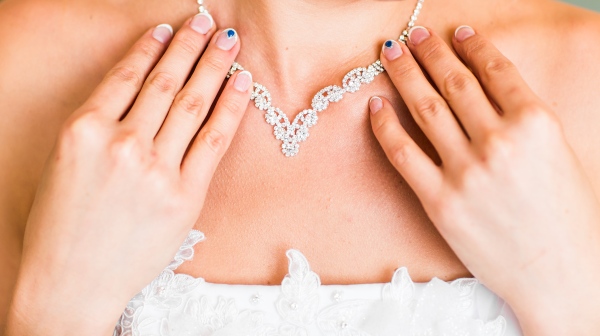
Popular Jewellery Styles
When it comes to natural diamond jewellery, there’s no shortage of stylish options. The choices are endless, from timeless diamond rings and solitaire earrings to modern pendants and eternity necklaces!
For those who desire a classic look, consider an elegant cluster bracelet. This style features clustered diamonds in one or more settings that create sparkling cascades of light. It is also possible to find vintage-inspired designs with pavé settings for a unique touch.
A popular choice for special occasions is a single-diamond ring. Whether you opt for a round brilliant cut or cushion shape stone, these rings will add instant glamour to any ensemble. Solitaire earrings can be dressed up or down depending on the occasion and come in various sizes and shapes, including oval, marquise, pear and princess cuts. Diamond pendants provide another option for everyday wear; they come in all sorts of styles, from heart-shaped stones to contemporary geometric shapes. A pair of natural diamond earrings will always be welcome. An eternity necklace adds sparkle around your neckline and symbolises everlasting love – perfect when gifting someone special!
Sourcing quality natural diamonds is essential to take advantage of these stunning pieces of jewellery.
Sourcing Natural Diamond Jewellery
Little did we know that owning natural diamond jewellery could achieve our freedom and self-expression dreams. Yes, those pieces that had been crafted to adorn us can also open up a world of possibilities for self-discovery and independence.
The process of sourcing diamonds is complex yet rewarding; it requires knowledge of the industry and careful consideration before making any decisions. To aid in selecting the perfect piece, some tips may include researching reputable jewellers who specialise in natural diamond jewellery or familiarising yourself with the four Cs: cut, colour, clarity and carat weight. Additionally, one should compare prices across different vendors as well as understand what type of setting would best suit their lifestyle needs. Once the perfect diamond piece has been found, it is important to also consider the jewellery care and maintenance. Understanding how to properly clean and store the diamond jewellery can help prolong its longevity and keep it looking as stunning as the day it was purchased. Some jewellers may offer guidance on how to best care for the piece, and it is advisable to follow their advice to ensure the diamond remains in impeccable condition for years to come. Buying diamond jewellery is not just a transaction, but an investment in something symbolic and special. Taking the time to educate oneself on the qualities of diamonds and the process of sourcing them can make the experience even more fulfilling. By being informed and deliberate in the decision-making process, one can ensure that the diamond jewellery they choose will hold sentimental and monetary value for a lifetime.
Ultimately, when purchasing these precious stones, you must ensure they are ethically sourced and certified conflict-free – this will guarantee your purchase was made responsibly without compromising quality or value. So if you want to add an item to your wardrobe that carries beauty and meaning, look no further than a natural diamond jewellery option. With responsible shopping practices in mind, let’s move on to taking care of these special items…
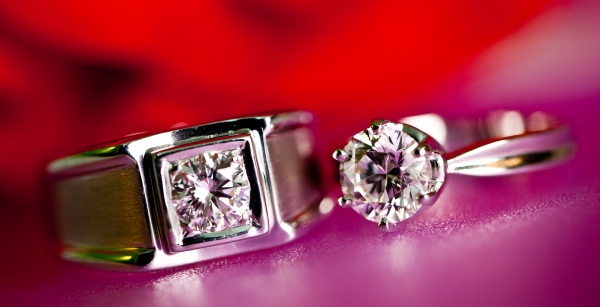
Care And Maintenance
Having sourced the perfect natural diamond jewellery piece, preserving its beauty and shine is important for years to come. To do this, proper care and maintenance of your new treasure must be taken on a regular basis.
One can begin by keeping their precious gem away from harsh chemicals or environments as these could damage the diamonds’ structure. A soft cloth should also be used when cleaning one’s jewellery; harsh materials like paper towels may scratch off any protective coatings. It is recommended that you take off all jewellery before showering or swimming in order to prevent dirt build-up over time.
For more detailed cleaning, one can turn to professional jewellers who specialise in polishing delicate pieces. You might even opt for an ultrasonic cleaner that uses sound waves to remove stubborn dirt particles – just make sure your natural diamond jewellery is suitable for such cleaners!
To keep your diamond sparkling and safe at all times, invest in a fabric pouch or box that won’t scratch the surface of the stone. This will help protect against accidental knocks and scrapes while storing away when not being worn. With regular upkeep and attention to detail, you’ll no doubt have your beautiful piece of natural diamond jewellery for many years to come – so don’t forget about it!
Becoming a Diamond Expert
To conclude, natural diamonds are an exceptional choice when considering jewellery. They come with unique characteristics and quality standards, making them a highly sought-after gemstone for many people worldwide. It is important to assess the value of a diamond before you purchase it, as this will ensure that you get the best possible deal. Furthermore, countless styles are available on the market today, so finding something that suits your style should not be too difficult. With proper care and maintenance, your natural diamond jewellery can last a lifetime – just like true love! As the cliche goes: ‘Diamonds really are forever.’ so invest in them wisely!
FAQs About Natural Diamonds
Is natural diamond a real diamond?
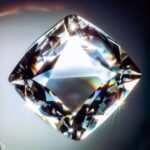
Yes, natural diamonds are real diamonds. Natural diamonds are formed deep beneath the Earth’s surface over millions of years and are composed of pure carbon that has crystallized under extreme pressure and heat. They are known for their exceptional hardness, brilliance, and durability, which makes them highly valued in the jewellery industry.
There are also lab-grown diamonds, which are created in a laboratory using advanced technology that replicates the natural conditions that cause diamonds to form. While lab-grown diamonds are not considered “natural” since they are not formed through natural processes, they are chemically and physically identical to natural diamonds. They are also considered “real” diamonds. Both natural and lab-grown diamonds have unique characteristics and are highly prized for their beauty and rarity.
What is a natural diamond in jewellery?
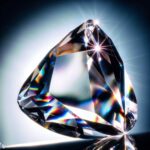
A natural diamond in jewellery is a diamond that has been mined from the earth and then cut and polished for use in jewellery. Natural diamonds are formed deep beneath the earth’s surface over millions of years and are known for their exceptional hardness, brilliance, and durability. They are highly valued in the jewellery industry for their beauty, rarity, and unique characteristic
Are natural diamonds more expensive?
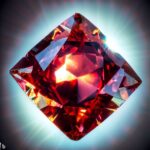
Natural diamonds are generally more expensive than lab-grown diamonds due to their rarity and the cost of mining and extracting them from the earth. Natural diamonds are formed under unique geological conditions that are difficult to replicate in a laboratory, and they are a finite resource, which adds to their value.
The price of a natural diamond can vary depending on several factors, including its size, quality, and colour. Larger diamonds and those with a high degree of clarity and colour are typically more valuable than smaller, lower-quality stones. The rarity of certain colours, such as pink and blue, can also significantly increase the price of a natural diamond.

